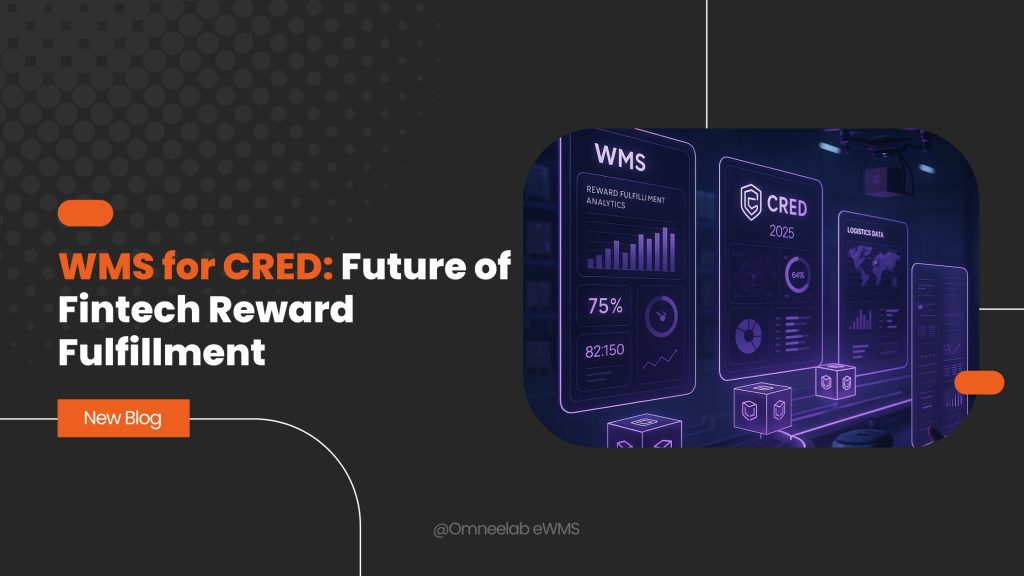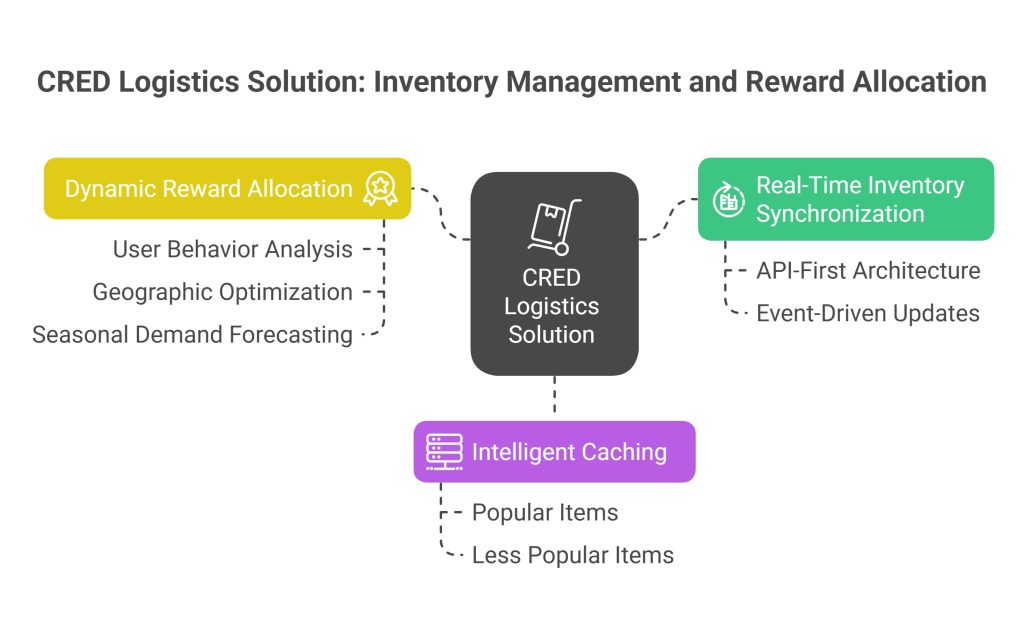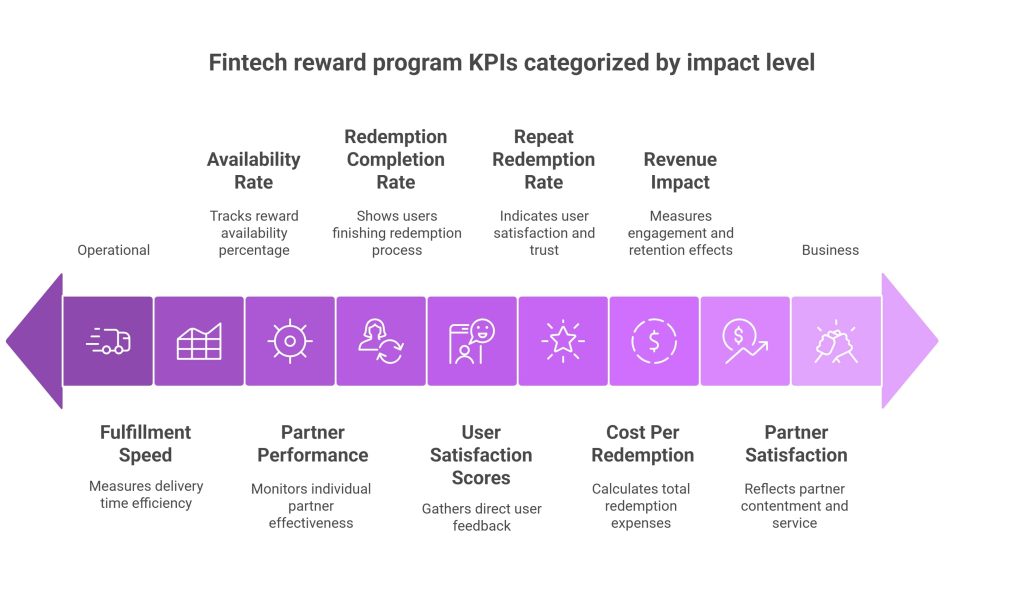Ever wondered how CRED manages to deliver millions of rewards seamlessly to its users? Behind every successful reward redemption lies a sophisticated warehouse management system fintech infrastructure that most people never see. The magic happens when you click “redeem” – but what really goes on behind the scenes?
CRED has fundamentally changed how we think about reward fulfillment systems. Unlike traditional e-commerce companies that stock physical inventory, CRED operates more like a sophisticated matchmaking platform. Their WMS for CRED approach represents the future of how fintech companies will handle reward distribution.

According to industry reports, fintech companies that implement advanced warehouse management systems see a 35% improvement in customer satisfaction and 42% reduction in fulfillment costs compared to traditional inventory models.
In this comprehensive guide, we’ll explore how CRED warehouse management works, what makes fintech logistics different from traditional retail, and why the future of reward fulfillment is heading in an entirely new direction. Whether you’re a fintech entrepreneur, logistics professional, or simply curious about how modern reward programs operate, this deep dive will give you insights you won’t find anywhere else.
Understanding WMS for CRED: Beyond Traditional Warehouse Management
What warehouse system does CRED use? This question comes up frequently in fintech circles, and the answer might surprise you. CRED doesn’t operate traditional warehouses like Amazon or Flipkart. Instead, they’ve built something far more sophisticated – a fintech logistics platform that connects users with rewards in real-time.
Think of CRED warehouse management as air traffic control for rewards. Just like air traffic controllers don’t own the planes but coordinate their movements, CRED doesn’t own most of the inventory but orchestrates how rewards flow from partners to customers.
The CRED Model: Redefining Warehouse Management
Virtual Inventory Management
CRED’s approach to inventory management CRED style involves managing virtual inventory pools. Rather than storing thousands of products in physical warehouses, they maintain real-time connections with partner brands. This means:
- Zero holding costs for most inventory
- Infinite scalability without physical constraints
- Dynamic pricing based on real-time availability
- Personalized offerings based on user preferences
Research indicates that virtual inventory models can reduce operational costs by up to 60% while increasing product variety by 300% compared to traditional warehouse-based systems.
Partner Network Integration
The CRED brand partnerships inventory system works through sophisticated APIs that connect directly with partner systems. When you browse rewards on CRED, you’re seeing real-time availability from dozens of different suppliers simultaneously.
Smart Allocation Algorithms
CRED reward program logistics uses machine learning to predict which rewards users are most likely to redeem. This helps partners optimize their inventory allocation and ensures popular items remain available during peak periods.
How Does CRED Manage Reward Inventory? The Technical Deep Dive
The most fascinating aspect of CRED logistics solution is how they handle inventory without actually holding inventory. It’s like being a restaurant that doesn’t have a kitchen but can still serve any dish you want – sounds impossible, right?
Real-Time Inventory Synchronization
API-First Architecture CRED’s digital rewards warehouse system relies heavily on APIs to maintain real-time synchronization with partner inventories. Every few seconds, the system polls partner systems to update availability, pricing, and delivery timelines.
Similar to how WMS for Shopify ecommerce fulfillment requires seamless integration with multiple sales channels, CRED’s system must coordinate with hundreds of partner APIs simultaneously.
Event-Driven Updates When a partner’s inventory changes, event-driven architecture ensures CRED’s system updates immediately. This prevents the common e-commerce problem of selling items that are out of stock.
Intelligent Caching To handle millions of users simultaneously, warehouse technology fintech solutions use sophisticated caching mechanisms. Popular items are cached closer to users, while less popular items are fetched in real-time.

Dynamic Reward Allocation
User Behavior Analysis CRED fulfillment center operations use advanced analytics to understand user preferences. The system learns from past redemptions, browsing behavior, and demographic data to predict which rewards each user is most likely to want.
Geographic Optimization Fintech reward distribution considers user location to prioritize rewards that can be delivered quickly and cost-effectively. A user in Mumbai might see different reward options than someone in Bangalore, based on partner fulfillment capabilities in each city.
Seasonal Demand Forecasting During festivals or special events, reward platform inventory tracking systems use historical data and external signals to predict demand spikes and work with partners to ensure adequate inventory allocation.
Industry data shows that AI-powered demand forecasting can improve inventory accuracy by 85% and reduce stockouts by 73% during peak seasons like Diwali and holiday periods.
What Technology Does CRED Use for Reward Fulfillment?
Understanding how CRED distributes rewards to customers requires looking at the complete technology stack that powers their operations. It’s far more complex than most people realize.
Core Infrastructure Components
Microservices Architecture CRED warehouse management uses a microservices approach where different functions operate independently:
- Inventory Service: Manages real-time inventory data from partners
- User Preference Service: Tracks and predicts user behavior
- Allocation Service: Decides which rewards to show each user
- Fulfillment Service: Coordinates delivery with partners
- Analytics Service: Provides insights for optimization
Cloud-Native Scaling Warehouse automation fintech solutions must handle massive scale variations. During major sales events, traffic can spike 10x or more. Cloud-native architecture allows CRED to scale resources dynamically.
Just like future warehouse management trends predict increased cloud adoption, CRED has been ahead of the curve in implementing cloud-native solutions.
Data Pipeline Management Fintech inventory visibility requires processing millions of data points daily. CRED uses advanced data pipelines to:
- Process partner inventory feeds
- Analyze user behavior patterns
- Generate personalized recommendations
- Track fulfillment performance
Integration Layer Technologies
Partner API Management Digital reward distribution network success depends on reliable partner integrations. CRED maintains connections with hundreds of partners, each with different API specifications, update frequencies, and data formats.
Payment Integration Payment platform logistics must seamlessly connect reward redemption with CRED’s credit system. When you redeem a reward, multiple systems coordinate to:
- Deduct CRED points from your account
- Reserve inventory with the partner
- Initiate fulfillment processes
- Update transaction records

Notification Systems Digital rewards processing includes comprehensive notification systems that keep users informed throughout the fulfillment process, from redemption confirmation to delivery updates.
How Do Fintech Companies Handle Reward Fulfillment? Industry Best Practices
What is warehouse management in fintech? It’s fundamentally different from traditional retail logistics. Fintech companies face unique challenges that require specialized approaches.
Regulatory Compliance Considerations
Financial Services Regulations Fintech supply chain management must comply with financial services regulations that don’t apply to traditional retailers. This includes:
- Transaction auditing requirements for all reward redemptions
- Data protection standards for financial information
- Anti-fraud measures integrated into fulfillment processes
- Regulatory reporting for reward program activities
Cross-Border Compliance As fintech companies expand internationally, fintech warehouse integration must handle different regulatory requirements in each market while maintaining operational efficiency.
Security and Risk Management
Fraud Prevention Credit card reward fulfillment systems must include sophisticated fraud detection to prevent abuse. This involves:
- Behavioral analysis to identify unusual redemption patterns
- Device fingerprinting to track suspicious activities
- Real-time scoring of transaction risk
- Manual review processes for high-risk redemptions
Data Security Fintech inventory optimization systems handle sensitive financial data that requires enterprise-grade security measures including encryption, access controls, and audit trails.
Studies reveal that fintech companies with advanced fraud prevention systems reduce fraudulent transactions by 89% and save an average of $2.3 million annually in prevented losses.
The Logistics Challenges Fintech Reward Programs Face
What logistics challenges do fintech reward programs face? The challenges are quite different from traditional e-commerce, and understanding them is crucial for building effective solutions.
Demand Volatility
Unpredictable Spikes Unlike traditional retail where demand patterns are relatively predictable, fintech reward program logistics optimization must handle extreme volatility. A viral social media post or unexpected market event can cause demand to spike 1000% overnight.
Seasonal Variations Reward program supply chain management must account for massive seasonal variations. During Diwali or other major festivals, reward redemption can increase by 500% or more, requiring flexible scaling capabilities.
Partner Dependency
Third-Party Reliability CRED fulfillment strategy depends heavily on partner performance. Unlike owning your own inventory, you’re at the mercy of partner systems, fulfillment capabilities, and service levels.
Quality Control Maintaining consistent quality across hundreds of partners is challenging. Digital payment reward logistics must include mechanisms for monitoring partner performance and handling quality issues.
Coordination Complexity Reward redemption warehouse operations involve coordinating with multiple partners simultaneously, each with different processes, timelines, and capabilities.
Best Practices for Fintech Reward Program Logistics Optimization
Building effective warehouse management systems for fintech reward programs requires following proven best practices that address the unique challenges of the fintech space.
Technology Architecture Principles
API-First Design Fintech warehouse automation should prioritize API-first architecture to enable seamless integration with partners, payment systems, and other fintech infrastructure.
Similar to how WMS integration types and benefits are crucial for traditional businesses, fintech companies need even more sophisticated integration capabilities.
Event-Driven Architecture Digital rewards processing benefits from event-driven systems that can react instantly to changes in inventory, user behavior, or partner availability.
Microservices Approach Breaking functionality into microservices allows different components to scale independently and reduces the risk of system-wide failures.

Partner Management Strategies
Diversified Partner Network CRED partner brand inventory strategies should avoid over-dependence on any single partner. Diversification reduces risk and provides more options for users.
Performance Monitoring Fintech order fulfillment requires continuous monitoring of partner performance, including fulfillment speed, quality, and reliability metrics.
Automated Partner Onboarding As the network grows, manual partner onboarding becomes unsustainable. Warehouse automation for fintech should include self-service partner onboarding capabilities.
User Experience Optimization
Personalization Engines Reward catalog management should use machine learning to personalize reward offerings based on user preferences, behavior, and demographics.
Real-Time Availability Fintech inventory management software must provide real-time availability information to prevent user frustration from out-of-stock items.
Transparent Communication Users should receive clear information about delivery timelines, partner details, and any potential issues with their reward redemption.
Future Trends in Warehouse Technology Fintech
Warehouse technology trends 2024 and beyond point toward several exciting developments that will reshape how fintech companies handle reward fulfillment.
Artificial Intelligence Integration
Predictive Analytics Advanced AI will enable fintech logistics challenges to be addressed proactively rather than reactively. Systems will predict demand spikes, inventory shortages, and delivery delays before they occur.
Intelligent Automation Warehouse automation solutions for digital payment platforms will become more sophisticated, handling complex decisions that currently require human intervention.
Personalization at Scale AI will enable hyper-personalization of reward offerings, considering factors like user mood, recent purchases, social media activity, and even weather patterns.
Market analysis indicates that AI-powered personalization in fintech reward programs can increase user engagement by 67% and boost redemption rates by 45% compared to generic offerings.
Blockchain and Distributed Systems
Supply Chain Transparency Blockchain technology will provide unprecedented visibility into reward program supply chain operations, enabling better tracking and verification of reward authenticity.
Smart Contracts Automated contract execution will streamline relationships with partners, reducing administrative overhead and improving reliability in fintech supply chain solutions.
Decentralized Inventory Future digital reward distribution networks might use blockchain to create truly decentralized inventory systems where multiple parties can contribute to and benefit from shared inventory pools.
Sustainability and Social Responsibility
Green Logistics Environmental considerations will become increasingly important in CRED business model logistics. This includes optimized routing to reduce carbon footprint and sustainable packaging options.
Social Impact Integration Future fintech reward program logistics might integrate social impact considerations, allowing users to choose rewards that support charitable causes or sustainable businesses.
Measuring Success: KPIs for Fintech Reward Fulfillment
To ensure your best warehouse management system for fintech reward programs is performing optimally, you need to track the right metrics.
Operational Excellence Metrics
Fulfillment Speed The time from redemption to delivery is crucial for user satisfaction. CRED competitor analysis warehouse operations typically target delivery within 2-7 days depending on the reward type.
Availability Rate The percentage of time popular rewards are available when users want to redeem them. High-performing systems maintain 95%+ availability for top rewards.
Partner Performance Tracking individual partner performance helps identify issues and optimize the partner network for better overall performance.
User Experience Metrics
Redemption Completion Rate The percentage of users who complete the redemption process after starting it. Lower completion rates indicate friction in the user experience.
User Satisfaction Scores Direct feedback from users about their reward fulfillment experience provides valuable insights for improvement.
Repeat Redemption Rate Users who redeem multiple rewards indicate satisfaction with the overall experience and trust in the platform.

Business Impact Metrics
Cost Per Redemption The total cost of facilitating each reward redemption, including technology, operations, and partner fees.
Revenue Impact How reward programs drive user engagement, retention, and ultimately revenue for the core fintech business.
Partner Satisfaction Happy partners are more likely to provide better inventory allocation, pricing, and service levels.
Conclusion: The Future is Here, and It’s Intelligent
The evolution of WMS for CRED and similar fintech platforms represents more than just technological advancement – it’s a fundamental reimagining of how commerce works in the digital age. We’ve moved from the old model of “stock everything and hope people buy it” to “connect people with exactly what they want, exactly when they want it.”
CRED warehouse management has shown us that the future isn’t about bigger warehouses or faster robots – it’s about smarter systems that understand users, predict demand, and coordinate seamlessly with partners. The fintech logistics platform of tomorrow will be invisible to users but incredibly sophisticated behind the scenes.
The companies that will thrive in this new landscape are those that understand that reward fulfillment systems are not just operational necessities – they’re competitive advantages. When done right, they create user experiences so seamless and satisfying that they become a key differentiator in crowded markets.
As we look ahead, the trends are clear: more intelligence, better integration, and deeper personalization. The warehouse management system fintech solutions of 2025 and beyond will make today’s systems look primitive by comparison.
Ready to build the future of fintech reward fulfillment? The journey starts with understanding that this isn’t just about moving products from point A to point B – it’s about creating experiences that delight users and drive business growth. The technology exists, the best practices are proven, and the opportunity is enormous.
For businesses looking to implement similar solutions, exploring comprehensive warehouse management solutions can provide the foundation needed for success in this evolving landscape.
The question isn’t whether AI and advanced automation will transform fintech logistics – it’s whether you’ll be leading that transformation or trying to catch up. The future of reward fulfillment is here, and it’s more exciting than ever.
Frequently Asked Questions
CRED uses a virtual inventory system with real-time API connections to partner brands. Instead of storing physical products, they maintain live visibility into partner inventories and coordinate fulfillment digitally. This eliminates holding costs while enabling unlimited scalability and personalized reward selection.
Fintech WMS must handle regulatory compliance, high-value rewards, extreme demand volatility, and complex partner dependencies. They require specialized features like fraud prevention, real-time payment processing, regulatory reporting, and sophisticated partner network management that traditional retail systems don’t provide.
Through diversified partner networks, predictive analytics for demand forecasting, event-driven architectures for real-time responses, and intelligent automation. They use cloud-native scaling for demand spikes, comprehensive partner monitoring, and robust fraud prevention throughout fulfillment.
CRED uses microservices architecture with specialized services for inventory, user preferences, allocation, and fulfillment coordination. Their stack includes real-time partner APIs, machine learning for personalization, event-driven updates, analytics platforms, and cloud-native infrastructure for dynamic scaling.
Key metrics include fulfillment speed (2-7 days), reward availability rate (95%+ for popular items), redemption completion rate, user satisfaction scores, and cost per redemption. Business metrics focus on user engagement, retention, and revenue impact, while partner metrics track reliability and service quality.
People also read:
- WMS for Tata CLiq
- WMS for Snapdeal
- WMS for Nykaa
- JioMart WMS Integration
- Inventory Management with Barcode Technology
- Common Inventory Management Challenges
- WMS for Magento
- WMS for WooCommerce
- WMS for Last Mile in India
- What Is a Bill of Materials (BOM)? Expert Guide & Tips

Kapil Pathak is a Senior Digital Marketing Executive with over four years of experience specializing in the logistics and supply chain industry. His expertise spans digital strategy, search engine optimization (SEO), search engine marketing (SEM), and multi-channel campaign management. He has a proven track record of developing initiatives that increase brand visibility, generate qualified leads, and drive growth for D2C & B2B technology companies.